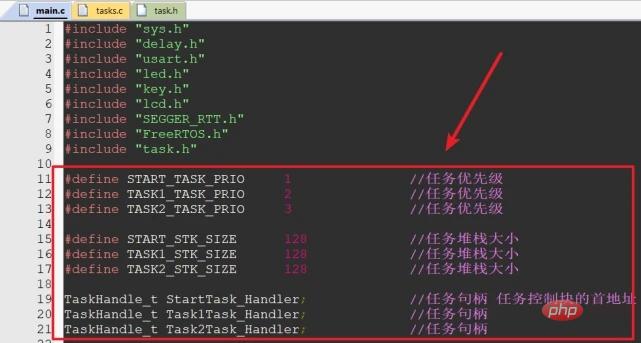What is the number of linux handles
linux句柄数是内核中打开文件数量的总和。linux系统中对进程可以调用的文件句柄数进行了限制,在默认情况下每个进程可以调用的最大句柄数是1024个,如果超过了这个限制,进程将无法获取新的句柄,而从导致不能打开新的文件或者网络套接字,对于线上服务器即会出现服务被拒绝的情况。

本教程操作环境:linux7.3系统、Dell G3电脑。
什么是句柄
句柄就是一个标识符,只要获得对象的句柄,我们就可以对对象进行任意的操作。
句柄不是指针,操作系统用句柄可以找到一块内存,这个句柄可能是标识符,map的key,也可能是指针,看操作系统怎么处理的了。fd算是在某种程度上替代句柄吧;Linux 有相应机制,但没有统一的句柄类型,各种类型的系统资源由各自的类型来标识,由各自的接口操作。
在操作系统层面上,文件操作也有类似于FILE的一个概念,在Linux里,这叫做文件描述符(File Descriptor),而在Windows里,叫做句柄(Handle)(以下在没有歧义的时候统称为句柄)。用户通过某个函数打开文件以获得句柄,此后用户操纵文件皆通过该句柄进行。
liunx中的句柄
在linux系统设计里面遵循一切都是文件的原则,即磁盘文件、目录、网络套接字、磁盘、管道等,所有这些都是文件,在我们进行打开的时候会返回一个fd,即是文件句柄。
如果频繁的打开文件,或者打开网络套接字而忘记释放就会有句柄泄露的现象。
在linux系统中对进程可以调用的文件句柄数进行了限制,在默认情况下每个进程可以调用的最大句柄数是1024个,如果超过了这个限制,进程将无法获取新的句柄,而从导致不能打开新的文件或者网络套接字,对于线上服务器即会出现服务被拒绝的情况。
linux句柄数是什么
当我们打开一个文件,内核就会分配一个句柄来表示这个文件。因此,Linux句柄数就是内核中打开文件数量的总和。
Linux句柄数也与内存有关。当内核分配一个句柄时,它会分配一定数量的内存来存储这个句柄的信息。因此中标linux,如果Linux句柄数增加了很多,那么就会占用大量的内存资源。因此,我们必须对Linux句柄数进行监测和管理,从而避免内存泄露和性能问题。
如何查看Linux句柄数
我们可以通过多种方法来监测Linux句柄数。例如,我们可以使用“lsof”命令来显示当前正在使用的文件的信息。同时,我们也可以使用“/proc/sys/fs/file-nr”文件检测当前正在使用的文件数量和最大允许使用的文件数量(即linux 句柄数)。此外查看linux 句柄数,我们还可以使用“ulimit”命令来设定最大允许使用的文件数量(即linux 句柄数)。
1.查看系统设置的文件句柄数
more /proc/sys/fs/file-max
2.查看当前打开句柄总数
lsof|awk '{print $2}'|wc -l3.根据打开文件句柄的数量降序排列,找出哪个进程占用的句柄数最高
lsof|awk '{print $2}'|sort|uniq -c|sort -nr|more
如何修改 Linux 句柄数
时候我们会遇到 Linux 句柄数过多的问题;这种情况下red hat linux,我么需要修改 Linux 句柄数了。
首先查看linux 句柄数,我么需要确定最大的 Linux 句柄数;这个最大的 Linux 句柄数由“/proc/sys/fs/file-max”这个文书决定。
之后可使用“ulimit -n”这个命书来设置最大的 Linux 句柄数;还需要重启机器才能生效。
总之, linux 句柄数是一个很重要的话题,既然它会间接影响到linux性能和安全。
一般情况下, linux 系统会额外开启几千个文件。如何通过相应的命名条去监测 Linux 句柄数,并选者合理地设定最大允许使用的 Linux 句柄数,都是必不可少的

相关推荐:《Linux视频教程》
The above is the detailed content of What is the number of linux handles. For more information, please follow other related articles on the PHP Chinese website!

Hot AI Tools

Undresser.AI Undress
AI-powered app for creating realistic nude photos

AI Clothes Remover
Online AI tool for removing clothes from photos.

Undress AI Tool
Undress images for free

Clothoff.io
AI clothes remover

AI Hentai Generator
Generate AI Hentai for free.

Hot Article

Hot Tools

Notepad++7.3.1
Easy-to-use and free code editor

SublimeText3 Chinese version
Chinese version, very easy to use

Zend Studio 13.0.1
Powerful PHP integrated development environment

Dreamweaver CS6
Visual web development tools

SublimeText3 Mac version
God-level code editing software (SublimeText3)

Hot Topics
 1382
1382
 52
52
 Difference between centos and ubuntu
Apr 14, 2025 pm 09:09 PM
Difference between centos and ubuntu
Apr 14, 2025 pm 09:09 PM
The key differences between CentOS and Ubuntu are: origin (CentOS originates from Red Hat, for enterprises; Ubuntu originates from Debian, for individuals), package management (CentOS uses yum, focusing on stability; Ubuntu uses apt, for high update frequency), support cycle (CentOS provides 10 years of support, Ubuntu provides 5 years of LTS support), community support (CentOS focuses on stability, Ubuntu provides a wide range of tutorials and documents), uses (CentOS is biased towards servers, Ubuntu is suitable for servers and desktops), other differences include installation simplicity (CentOS is thin)
 How to install centos
Apr 14, 2025 pm 09:03 PM
How to install centos
Apr 14, 2025 pm 09:03 PM
CentOS installation steps: Download the ISO image and burn bootable media; boot and select the installation source; select the language and keyboard layout; configure the network; partition the hard disk; set the system clock; create the root user; select the software package; start the installation; restart and boot from the hard disk after the installation is completed.
 Centos options after stopping maintenance
Apr 14, 2025 pm 08:51 PM
Centos options after stopping maintenance
Apr 14, 2025 pm 08:51 PM
CentOS has been discontinued, alternatives include: 1. Rocky Linux (best compatibility); 2. AlmaLinux (compatible with CentOS); 3. Ubuntu Server (configuration required); 4. Red Hat Enterprise Linux (commercial version, paid license); 5. Oracle Linux (compatible with CentOS and RHEL). When migrating, considerations are: compatibility, availability, support, cost, and community support.
 How to use docker desktop
Apr 15, 2025 am 11:45 AM
How to use docker desktop
Apr 15, 2025 am 11:45 AM
How to use Docker Desktop? Docker Desktop is a tool for running Docker containers on local machines. The steps to use include: 1. Install Docker Desktop; 2. Start Docker Desktop; 3. Create Docker image (using Dockerfile); 4. Build Docker image (using docker build); 5. Run Docker container (using docker run).
 Detailed explanation of docker principle
Apr 14, 2025 pm 11:57 PM
Detailed explanation of docker principle
Apr 14, 2025 pm 11:57 PM
Docker uses Linux kernel features to provide an efficient and isolated application running environment. Its working principle is as follows: 1. The mirror is used as a read-only template, which contains everything you need to run the application; 2. The Union File System (UnionFS) stacks multiple file systems, only storing the differences, saving space and speeding up; 3. The daemon manages the mirrors and containers, and the client uses them for interaction; 4. Namespaces and cgroups implement container isolation and resource limitations; 5. Multiple network modes support container interconnection. Only by understanding these core concepts can you better utilize Docker.
 What to do after centos stops maintenance
Apr 14, 2025 pm 08:48 PM
What to do after centos stops maintenance
Apr 14, 2025 pm 08:48 PM
After CentOS is stopped, users can take the following measures to deal with it: Select a compatible distribution: such as AlmaLinux, Rocky Linux, and CentOS Stream. Migrate to commercial distributions: such as Red Hat Enterprise Linux, Oracle Linux. Upgrade to CentOS 9 Stream: Rolling distribution, providing the latest technology. Select other Linux distributions: such as Ubuntu, Debian. Evaluate other options such as containers, virtual machines, or cloud platforms.
 What computer configuration is required for vscode
Apr 15, 2025 pm 09:48 PM
What computer configuration is required for vscode
Apr 15, 2025 pm 09:48 PM
VS Code system requirements: Operating system: Windows 10 and above, macOS 10.12 and above, Linux distribution processor: minimum 1.6 GHz, recommended 2.0 GHz and above memory: minimum 512 MB, recommended 4 GB and above storage space: minimum 250 MB, recommended 1 GB and above other requirements: stable network connection, Xorg/Wayland (Linux)
 What underlying technologies does Docker use?
Apr 15, 2025 am 07:09 AM
What underlying technologies does Docker use?
Apr 15, 2025 am 07:09 AM
Docker uses container engines, mirror formats, storage drivers, network models, container orchestration tools, operating system virtualization, and container registry to support its containerization capabilities, providing lightweight, portable and automated application deployment and management.




